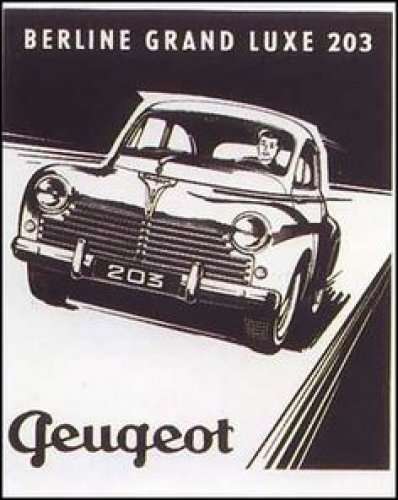Thursday 2nd April 1896
Armand Peugeot set up his own company, Société Anonyme des Automobiles Peugeot. He built a factory at Audincourt, dedicated to the manufacture of cars with an internal combustion engine. By 1899 sales cars for Peugeot got up to 300, which is pretty decent considering that during that year only 1200 cars were sold in France. In 1903 Peugeot added motorcycles to his factory production. After a brief period out of racing, a Peugeot car managed to win the Indianapolis 500 with Jules Goux at the wheel in 1913. The success of the car was due to the introduction of the DOHC 4 valves per cylinder engine. As war dawned in Europe, Peugeot turned to making arms and military vehicles of course. The good thing about surviving the war was that cars were now becoming more of a necessity and less of a luxury which meant bigger sales for Peugeot. In 1929 the first 201 model was introduced, a way of numbering cars that would be trademarked by the French automaker. Having survived the depression, the company the tried in 1933 to woo buyers with a more aerodynamic look. The model that came out that year had a retractable hard top, an innovation that would be also picked up by Mercedes. During the Second World War, Peugeot fate took a turn for the worse as its factories were forced to build cars and weapons for the German war effort. By the end of the war, the plants were heavily bombed and in need of reparations. It would take the company until 1948 to resume car production with the 203 model. This was only the beginning as a new series of Italian-designed models by Pininfarina completed the line-up. The success of these cars determined Peugeot to start selling in the US too in 1958. By this time, Peugeot starting collaborating with other manufacturers such as Renault (1966) and Volvo (1972). In a bid to acquire a bigger share of the market, Peugeot bought 30% of Citroen in 1974, taking over completely in just two years which meant a change in the company’s name, now the PSA (Peugeot Societe Anonyme). This partnership meant that the two brands could make use of each other’s technical achievements but keep their independence design-wise. Further expansion of the PSA group saw the overtaking of the European division of Chrysler in 1978, an investment which proved faulty as most Chrysler facilities and machinery was old and worn out. These models were later sold under the Talbot brand. When sales began to go under, Peugeot decided to pull the plug on all models except the Arizona which became the 309 in 1986. During the 90s Peugeot got some of its old fame back after a series of miscalculations regarding the general direction of the company. The current model line-up is aiming towards a more luxurious market, with cost cuts no longer being made to sacrifice the overall look and feel of the car. Some wins in the racing world, including rallies and even Formula 1, have helped Peugeot with sales. Now Peugeot has developed several new model ranges, outside the classic 200, 300, 400 and 600 series. The 100 and 900 are the exact opposite, with the 100 eyeing the super compact range while 900 is not for the budget shoppers. The French automaker has even a hybrid vehicle in the make, a version of the 307.






